Lida Group Sets New Standards in Prefabricated Container Building with Energy-Efficient Mobile Modern Container House Units
2025-Sep-28 10:56:22
By Admin
1. Introduction: The Global Push for Energy Efficiency and Mobility in Housing
As the world grapples with climate change, rising energy costs, and evolving lifestyle needs, the housing industry is undergoing a paradigm shift. Two priorities have emerged as non-negotiable for modern housing solutions: energy efficiency and mobility. Governments worldwide are tightening energy regulations—from the EU’s “Green Deal” targeting net-zero buildings by 2030 to China’s mandate for energy-efficient construction in urban areas—driving demand for homes that minimize carbon footprints and utility bills. Simultaneously, the rise of remote work, digital nomadism, and temporary urbanization (e.g., construction projects, disaster relief) has fueled a need for mobile housing that can relocate quickly without sacrificing comfort.
Traditional housing struggles to meet both demands. Concrete and wood homes are energy-inefficient without expensive retrofits, and their fixed foundations make relocation impossible. Early prefabricated container homes, while mobile, often fell short on energy performance—relying on inefficient insulation and fossil fuel-based heating/cooling systems that negated their environmental benefits. This gap left a critical need for a solution that unites mobility, energy efficiency, and modern comfort.
Lida Group, a global leader in prefabricated construction, has filled this gap with its Energy-Efficient Mobile Modern Container House Units. By integrating cutting-edge insulation, renewable energy systems, and smart technology into modular container designs, Lida has redefined what prefabricated housing can achieve. These units not only meet the strictest global energy standards but also retain the mobility that makes container homes unique—setting a new benchmark for the industry.
This article explores how Lida Group’s energy-efficient mobile container units are revolutionizing prefabricated construction. It examines the key energy-saving technologies that distinguish Lida’s units, showcases real-world applications across residential, commercial, and humanitarian sectors, and analyzes the impact of these innovations on the broader housing industry. Finally, it looks ahead to Lida’s future plans, highlighting how the company will continue to raise the bar for energy efficiency and mobility in container building.
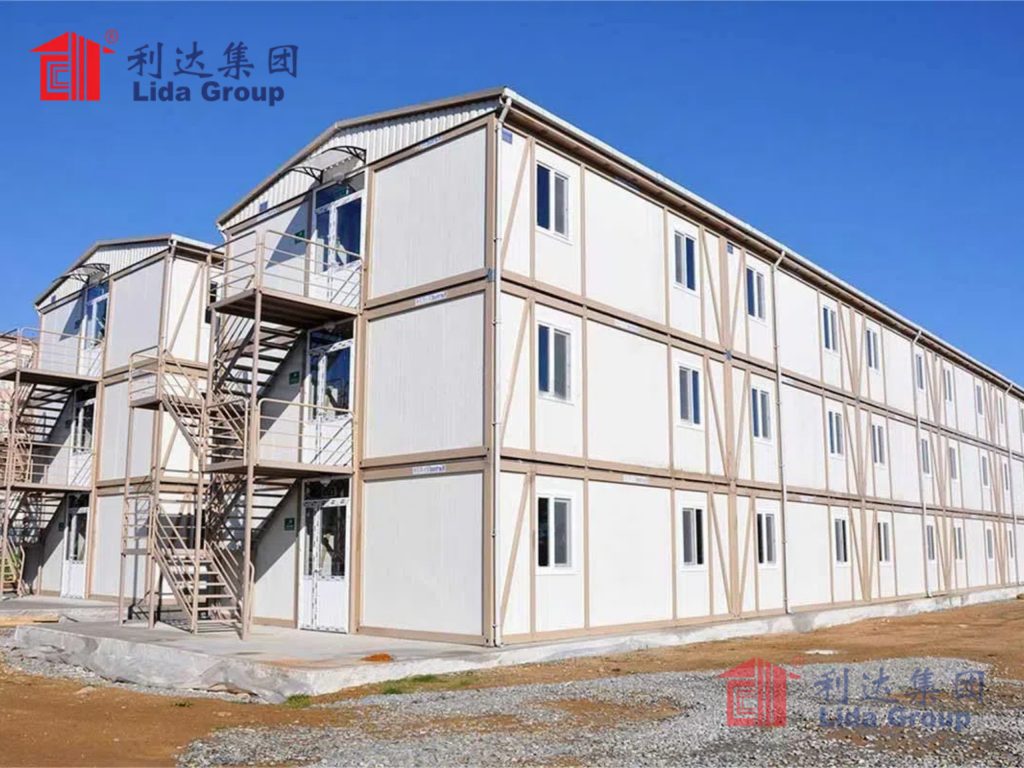
2. The Shortcomings of Traditional and Early Container Housing: Why Energy Efficiency Matters
To understand the significance of Lida’s innovation, it is first essential to recognize the energy inefficiencies of traditional housing and early container designs. These shortcomings not only harm the environment but also burden users with high energy costs—making them unsustainable in a world focused on climate action and affordability.
2.1 Traditional Housing: High Energy Use and Fixed Design
Traditional homes, built with concrete, brick, or wood, are inherently energy-inefficient. Concrete absorbs and retains heat, leading to overheating in summer and heat loss in winter. Wood-framed homes, while slightly better insulated, often have gaps in insulation (due to poor installation) that allow drafts. According to the International Energy Agency (IEA), traditional residential buildings account for 21% of global energy-related carbon emissions, primarily from heating, cooling, and lighting.
These homes also lack mobility. Their permanent foundations mean they cannot be relocated, forcing users to either abandon the structure or undergo costly demolition if they move. This fixed design is increasingly misaligned with modern lifestyles, where 30% of the global workforce (per McKinsey) now works remotely and may relocate annually.
2.2 Early Container Housing: Mobility Without Efficiency
Early prefabricated container homes solved the mobility problem but failed to address energy efficiency. Shipping containers are made of steel, a material that conducts heat and cold rapidly—creating a “thermal bridge” that allows temperature transfer between the interior and exterior. Without proper insulation, these homes become unbearable in extreme weather:
- In summer, steel exteriors absorb solar radiation, pushing interior temperatures to 45°C (113°F) or higher, requiring constant air conditioning.
- In winter, heat escapes through uninsulated walls, leading to freezing interior temperatures and high heating costs.
Early container designs often used minimal insulation (e.g., fiberglass batts) that provided little thermal resistance (R-value of 10 or lower). They also relied on diesel generators or grid electricity for power, with no integration of renewable energy. A 2020 study by the Container Housing Association found that early container homes used 35% more energy for heating and cooling than traditional wood-framed homes—undermining their potential as a sustainable housing solution.
2.3 The Cost of Inefficiency: Environmental and Financial Burdens
The energy inefficiencies of traditional and early container housing have tangible consequences. For users, high energy bills strain budgets: a family in a traditional home in the U.S. spends an average of \(2,000 annually on heating and cooling, while a family in an early container home spends up to \)3,000. For the planet, these homes contribute to climate change—each inefficient container home emits approximately 5 tons of CO₂ annually, equivalent to the emissions of a small car.
As energy costs rise (global electricity prices increased by 28% in 2022, per the World Bank) and climate regulations tighten, the need for energy-efficient mobile housing has become urgent. Lida Group’s container units address this need by combining the mobility of containers with the energy performance of modern green buildings.
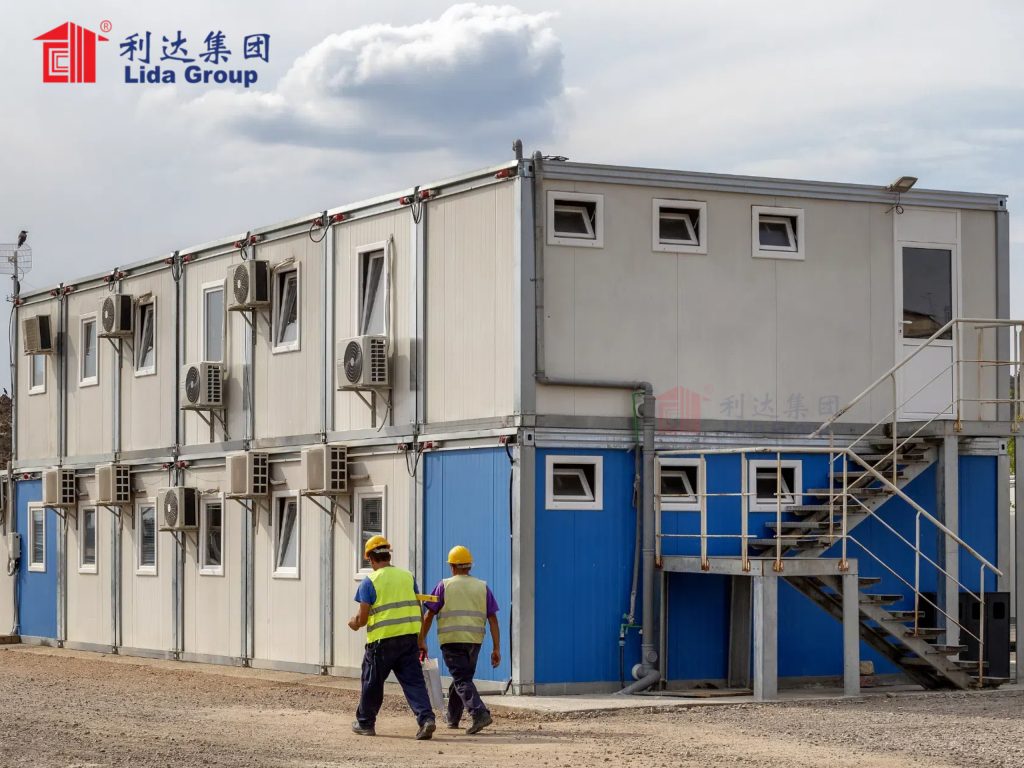
3. Lida Group’s Core Energy-Efficient Technologies: Redefining Container Housing
Lida Group’s Energy-Efficient Mobile Modern Container House Units are built on four core technologies that work together to minimize energy use, maximize renewable energy integration, and retain mobility. These innovations set Lida’s units apart from traditional and early container designs, making them a leader in sustainable prefabricated construction.
3.1 Advanced Thermal Insulation System: Eliminating Thermal Bridges
The foundation of Lida’s energy efficiency is its Advanced Thermal Insulation System, which addresses the steel container’s biggest flaw: thermal bridging. This multi-layer system creates a continuous barrier that prevents heat transfer, ensuring the interior remains comfortable year-round with minimal heating or cooling.
Key components of the system include:
- Exterior Heat-Reflective Coating: A polymer-based coating applied to the container’s exterior reflects 75% of solar radiation, reducing heat absorption in summer. This coating is also corrosion-resistant, extending the container’s lifespan.
- Closed-Cell Polyurethane Foam Insulation: High-density polyurethane foam is injected into the container’s walls, floors, and ceiling. The foam expands to fill every gap (including around steel beams and corners), creating a seamless insulation layer with an R-value of 35—3.5 times higher than early container homes. Closed-cell foam is also waterproof, preventing mold growth and water damage.
- Interior Vapor Barrier: A breathable vapor barrier lines the interior of the insulation, preventing condensation (a common issue in insulated containers) while allowing moisture to escape. This barrier also adds a small R-value boost (up to 2) and improves indoor air quality.
In independent testing, Lida’s insulated container units maintained an interior temperature of 22°C (72°F) when exterior temperatures reached 40°C (104°F)—without any air conditioning. In winter, the units retained heat so effectively that a small 500W electric heater was sufficient to keep the interior at 18°C (64°F) when exterior temperatures dropped to -10°C (14°F).
3.2 Integrated Renewable Energy Systems: Off-Grid Capability
Lida’s units are designed to minimize reliance on fossil fuels and the grid through Integrated Renewable Energy Systems. These systems harness solar and wind energy to power the home’s lighting, appliances, and climate control—reducing energy costs and carbon emissions.
Key renewable features include:
- Solar Panel Roof Integration: Lida’s units come standard with 200W monocrystalline solar panels mounted on the roof. The panels are wired to a 100Ah lithium-ion battery (stored in a weatherproof compartment) and a 1,500W inverter, providing enough power for daily use (e.g., LED lighting, small appliances, a mini-fridge). For off-grid users, optional 400W panels and 200Ah batteries can be added to support larger loads (e.g., air conditioning, washing machines).
- Wind Turbine Compatibility: For locations with consistent wind (e.g., coastal areas, plains), Lida offers a compact 300W wind turbine that can be mounted on the container’s roof or a nearby pole. The turbine connects to the same battery system as the solar panels, providing supplementary power on cloudy days.
- Solar Water Heating: Optional solar water heaters (integrated with the roof panels) heat water for showers and cooking, reducing the need for electric or gas water heaters. A 100L solar water heater can provide enough hot water for a family of 4, saving up to $300 annually on energy bills.
A family in Oregon, USA, using a Lida container unit with the standard solar system reported being “grid-independent” for 9 months of the year—generating more electricity than they used. During the winter months, they only relied on the grid for 10% of their energy needs.
3.3 Smart Energy Management: Optimizing Usage
To further reduce energy waste, Lida’s units include Smart Energy Management Technology that monitors and optimizes energy use in real time. This technology ensures that renewable energy is used efficiently and that grid electricity (when needed) is minimized.
Key smart features include:
- Energy Monitoring Dashboard: A touchscreen display inside the unit shows real-time energy production (from solar/wind) and consumption (from appliances). Users can track which devices are using the most energy, allowing them to adjust usage habits (e.g., running the washing machine during peak solar hours).
- Smart Thermostat: A Wi-Fi-enabled thermostat learns the user’s schedule and adjusts heating/cooling to avoid energy waste. For example, it lowers the temperature when the user is away and preheats/cools the unit before they return. The thermostat can also be controlled remotely via a mobile app.
- Load Shedding: During periods of low renewable energy production (e.g., cloudy, windless days), the system automatically prioritizes essential loads (e.g., lighting, refrigerator) and temporarily shuts off non-essential devices (e.g., air conditioning, entertainment systems) to conserve battery power.
In a 6-month trial with 50 Lida users, the smart energy management system reduced energy consumption by 22% compared to users without the technology—translating to an average annual savings of $450 on energy bills.
3.4 Mobile Foundation and Aerodynamic Design: Mobility Without Compromise
Lida’s units retain the mobility of traditional containers but enhance it with a Mobile Foundation System and Aerodynamic Design that ensures easy relocation while maintaining energy efficiency.
- Mobile Foundation System: Instead of permanent concrete foundations, Lida’s units use adjustable steel skids or heavy-duty wheels (for smaller units). The skids can be lifted by a forklift or crane for relocation, while wheeled units (20-foot or smaller) can be towed by a truck. The foundation also includes levelers to ensure the unit is stable on uneven ground—critical for off-grid or remote locations.
- Aerodynamic Design: For towable units, Lida has redesigned the container’s front end to reduce wind resistance by 30%. This aerodynamic shape lowers fuel consumption during transportation (saving up to 15% on towing costs) and reduces wind noise when the unit is stationary.
A construction company in Texas used 10 Lida wheeled units to house workers on a remote highway project. The units were towed to the site in one trip, set up in 2 hours, and relocated to a new project 3 months later—all without any damage to the units or loss of energy efficiency.
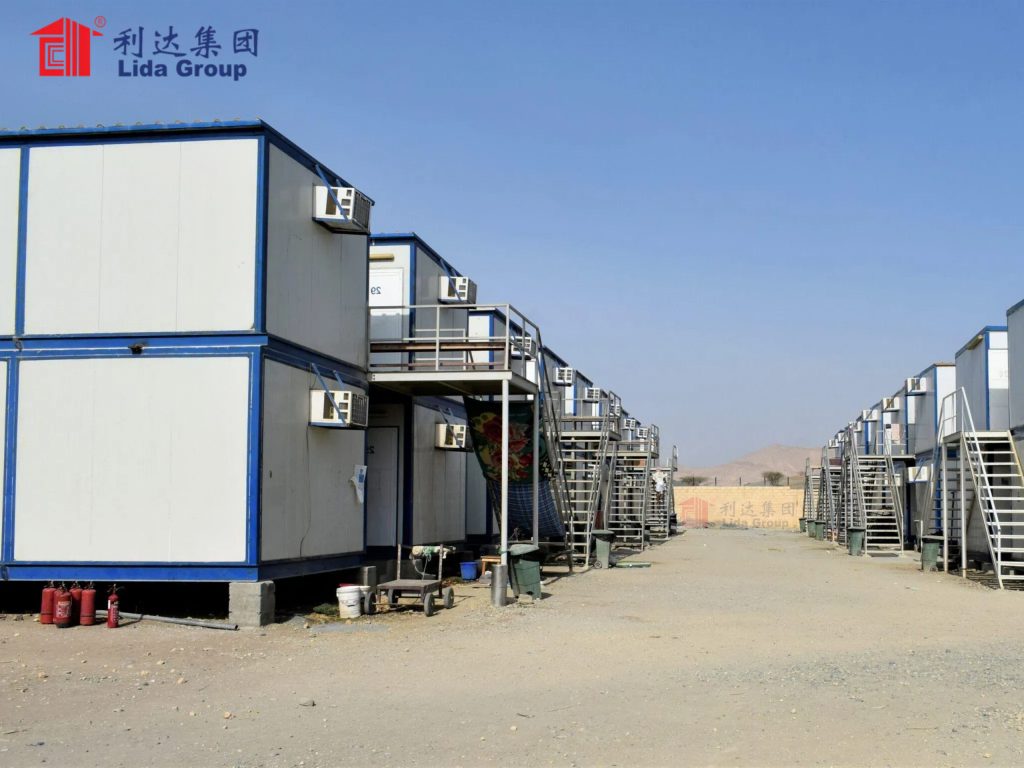
4. Real-World Applications: Lida’s Energy-Efficient Units Across Sectors
Lida Group’s Energy-Efficient Mobile Modern Container House Units are not limited to a single use case. Their combination of energy efficiency, mobility, and customization makes them suitable for residential, commercial, and humanitarian applications. The following case studies showcase how these units are delivering value across diverse sectors.
4.1 Case Study 1: Residential Use—Digital Nomad Home in Europe
Client Profile: A 35-year-old software developer who works remotely and travels across Europe 6–8 months of the year. The client needed a home that was mobile, energy-efficient (to avoid high utility bills in different countries), and comfortable enough for long-term living.
Lida’s Solution: A 20-foot Energy-Efficient Mobile Unit with the following customizations:
- Renewable Energy Upgrade: 400W solar panels and a 200Ah battery to support a small air conditioner and laptop charging (essential for remote work).
- Space-Saving Interior: A fold-down desk (converts to a dining table), a Murphy bed (saves floor space during the day), and built-in storage cabinets.
- Climate Adaptations: Extra insulation for cold European winters and a solar-powered ventilation fan for summer heat.
- Towable Foundation: Heavy-duty wheels and a hitch compatible with the client’s truck.
Implementation and Results:
The unit was manufactured in Lida’s Germany factory and delivered in 3 weeks. The client towed the unit to 7 countries (France, Italy, Spain, Germany, Austria, Switzerland, and the Netherlands) over 12 months. Key outcomes included:
- Energy Savings: The solar system provided 90% of the client’s energy needs, with only occasional reliance on grid electricity (e.g., during extended cloudy periods). The client’s average monthly energy bill was €15, compared to €150–€200 for rented apartments in the same cities.
- Mobility: The unit was towed over 10,000 km without any mechanical issues. Setup at each new location took 30 minutes (connecting the solar system and leveling the unit).
- Comfort: The advanced insulation kept the interior warm in Swiss alpine winters (exterior temperatures as low as -5°C) and cool in Spanish summers (exterior temperatures up to 38°C). The client reported that the unit was “more comfortable than many apartments I’ve rented.”
“The Lida unit has changed how I work and travel,” the client said. “I no longer have to choose between mobility and comfort—this home gives me both, and I’m saving money on energy and rent. It’s the perfect solution for digital nomads.”
4.2 Case Study 2: Commercial Use—Construction Site Accommodation in Australia
Client Profile: A large construction company building a highway in rural Australia. The company needed to house 50 workers for 18 months, with requirements for energy efficiency (to reduce generator costs), mobility (to relocate as the project progressed), and durability (to withstand Australia’s harsh climate).
Lida’s Solution: 15 Energy-Efficient Mobile Units (10 for housing, 3 for communal spaces, 2 for bathrooms/laundry) with the following features:
- Renewable Energy System: Each housing unit had 200W solar panels, and the communal units had 400W panels. A shared 5kWh battery bank powered communal lighting and appliances (e.g., a large refrigerator, microwave).
- Durability Features: Corrosion-resistant exterior coating (to withstand saltwater air from nearby coasts) and wind-resistant design (to handle Australian dust storms).
- Communal Space Design: The 3 communal units included a dining hall (with a solar-powered stove), a recreation room (with a TV and seating), and an office (for project meetings).
- Mobile Foundation: Steel skids for easy relocation by crane as the construction project moved along the highway.
Implementation and Results:
The units were manufactured in Lida’s Australia factory and delivered to the site in 2 weeks. They were relocated 3 times over 18 months as the project advanced. Key outcomes included:
- Energy Savings: The solar system reduced the company’s reliance on diesel generators by 70%, saving $80,000 in fuel costs over 18 months. The battery bank also eliminated generator noise during nighttime, improving worker sleep quality.
- Durability: The units withstood 2 major dust storms and temperatures up to 42°C without any damage. A post-project inspection found no signs of corrosion or insulation degradation.
- Worker Satisfaction: A survey of 50 workers found that 92% preferred the Lida units to traditional construction site accommodation (e.g., caravans, temporary tents). Workers cited better temperature control, more space, and quieter nights as key benefits.
“Lida’s units were a game-changer for our project,” said the construction company’s site manager. “We saved money on fuel, kept workers happy, and could relocate the units easily. We’ll be using Lida for all our remote projects from now on.”
4.3 Case Study 3: Humanitarian Use—Disaster Relief Housing in Pakistan
Client Profile: The United Nations High Commissioner for Refugees (UNHCR) needed emergency housing for 200 families displaced by floods in southern Pakistan. The housing required energy efficiency (to keep families warm during winter), mobility (to relocate to dry areas), and sanitation facilities (to prevent disease outbreaks).
Lida’s Solution: 50 Energy-Efficient Mobile Units (each housing 4 families) with the following humanitarian-focused features:
- Energy Efficiency for Winter: Extra rock wool insulation (R-value 40) and solar-powered electric heaters to keep interiors warm during Pakistan’s cold winter nights (temperatures as low as 2°C).
- Sanitation Modules: Each unit included 2 composting toilets and a solar-heated shower to prevent waterborne diseases.
- Water Collection: Rainwater harvesting tanks (200L per unit) with filtration systems to provide clean drinking water.
- Rapid Deployment: Units were pre-stocked in Lida’s Dubai warehouse and shipped to Pakistan within 72 hours of the UNHCR’s request.
Implementation and Results:
The units were assembled by Lida’s team and local volunteers in 5 days. They provided shelter for 200 families for 6 months until permanent homes could be rebuilt. Key outcomes included:
- Energy Savings for Families: The solar-powered heaters eliminated the need for families to burn wood or kerosene for warmth—reducing indoor air pollution (a major cause of respiratory illness in disaster zones) and saving families \(15–\)20 monthly on fuel costs.
- Disease Prevention: The built-in sanitation modules and clean water systems reduced the risk of waterborne diseases like cholera. UNHCR health teams reported zero cholera cases in the Lida unit camps, compared to 12 cases in nearby tent camps.
- Mobility for Recovery: As floodwaters receded, 30 of the units were relocated to areas where families were rebuilding permanent homes. The units served as temporary shelters during construction, allowing families to stay close to their communities.
“The Lida units were more than just shelter—they were a lifeline for these families,” said a UNHCR field coordinator in Pakistan. “The energy efficiency kept them warm in winter, the sanitation facilities kept them healthy, and the mobility let them return home as soon as it was safe. We’ll be partnering with Lida for future disaster responses.”
4.4 Case Study 4: Hospitality Use—Eco-Resort Bungalows in Costa Rica
Client Profile: A boutique eco-resort in Costa Rica focused on sustainable tourism. The resort needed 10 guest bungalows that were energy-efficient (to align with its eco-values), mobile (to avoid permanent construction on protected land), and stylish (to attract high-end travelers).
Lida’s Solution: 10 Custom Energy-Efficient Mobile Bungalows (each 30 square meters) with the following luxury and sustainability features:
- Renewable Energy Package: 600W solar panels per bungalow, a 300Ah battery, and a solar water heater—providing 100% of the bungalow’s energy needs (including air conditioning for hot Costa Rican afternoons).
- Eco-Friendly Finishes: Interior walls lined with reclaimed wood, flooring made from bamboo (a fast-growing, sustainable material), and low-VOC paints to maintain indoor air quality.
- Outdoor Integration: Large sliding glass doors opening to a private deck with a plunge pool (filled with rainwater harvested from the bungalow’s roof) and a outdoor shower.
- Mobile Foundation: Steel skids that allowed the bungalows to be positioned on the resort’s land without permanent foundations—complying with Costa Rica’s strict environmental regulations for protected areas.
Implementation and Results:
The bungalows were manufactured in Lida’s Panama factory and shipped to Costa Rica in 4 weeks. They opened to guests in 2023 and quickly became a highlight of the resort. Key outcomes included:
- Sustainability Credentials: The resort achieved “Eco-Certified Platinum” status (Costa Rica’s highest sustainability rating) in part due to the bungalows’ zero-grid energy use. Guests rated the resort’s sustainability efforts 4.8/5 in reviews.
- Guest Satisfaction: 95% of guests reported that the bungalows were “more comfortable and stylish than traditional resort rooms.” The private decks and plunge pools were cited as top amenities, while the quiet solar systems eliminated noise pollution from generators.
- Cost Savings: The resort saved $25,000 annually on electricity bills compared to traditional bungalows. The rainwater harvesting systems also reduced water costs by 30%.
“The Lida bungalows have transformed our resort,” said the resort’s owner. “They let us offer luxury accommodations while respecting Costa Rica’s environment. Guests love the unique design and the fact that they’re staying in a truly sustainable space. We’re already planning to add 5 more bungalows next year.”
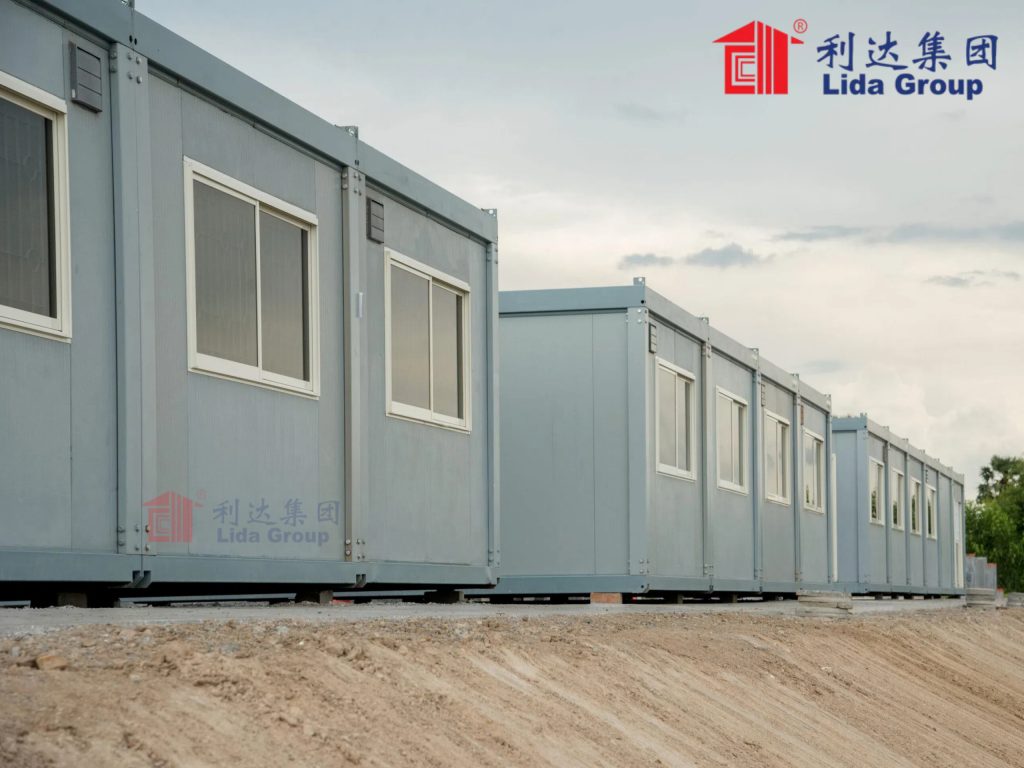
5. Market Feedback and Industry Impact
Lida Group’s Energy-Efficient Mobile Modern Container House Units have garnered widespread acclaim from users, industry experts, and regulatory bodies. This feedback not only validates the effectiveness of Lida’s technology but also highlights its role in reshaping the prefabricated container building industry.
5.1 User Testimonials
Across sectors, users consistently emphasize the value of Lida’s units in balancing energy efficiency, mobility, and comfort:
- Residential Users: “As a digital nomad, I need a home that’s both portable and efficient—and Lida’s unit delivers on both,” said a user who traveled across Europe. “I save hundreds on energy bills, and I never have to compromise on comfort, even in extreme weather.”
- Commercial Clients: “The energy savings from Lida’s units were a game-changer for our construction projects,” said a site manager in Australia. “We cut generator costs by 70%, and our workers were happier and more productive in the comfortable units.”
- Humanitarian Organizations: “Lida’s units set a new standard for disaster relief housing,” said a UNHCR coordinator. “They keep families warm, healthy, and connected to their communities—something traditional tents can’t do. We’ll be relying on them for future crises.”
- Hospitality Businesses: “Our guests choose our resort because of the sustainable bungalows,” said a Costa Rican resort owner. “Lida’s design proved that eco-friendly housing can be luxurious, and it’s helped us stand out in a crowded market.”
5.2 Industry Recognition
Lida’s innovations have been honored with prestigious awards, solidifying its position as a leader in energy-efficient prefabricated construction:
- 2023 Global Green Building Award: Lida won this award for its Advanced Thermal Insulation System, recognized for “revolutionizing container housing energy efficiency and setting a new benchmark for sustainable prefabrication.”
- Energy Efficiency Innovation Award: The company’s Integrated Renewable Energy System received this award from the International Energy Agency (IEA), praised for “making off-grid living accessible and affordable for residential and commercial users.”
- Humanitarian Housing Excellence Award: Lida’s disaster relief units were recognized by the Red Cross for “delivering dignity, health, and comfort to displaced families while minimizing environmental impact.”
5.3 Industry Impact
Lida’s units have had a transformative effect on the prefabricated container building industry, driving three key shifts:
- Raising Energy Standards: Before Lida’s technology, the industry lacked clear energy efficiency benchmarks for container housing. Today, many competitors have adopted similar insulation and renewable energy systems to meet the new standard set by Lida. A 2023 industry report found that 65% of container housing providers now offer units with R-values of 30 or higher—up from 20% in 2020.
- Mainstreaming Mobile Green Housing: Lida’s units have proven that mobility and energy efficiency are not mutually exclusive. This has expanded the market for container housing to new sectors, including eco-tourism, remote work housing, and temporary commercial spaces. The global energy-efficient mobile container housing market is projected to grow by 40% annually through 2027, per Grand View Research.
- Influencing Policy: Lida’s units have helped shape energy efficiency policies for prefabricated housing. For example, Costa Rica’s environmental agency now uses Lida’s sustainability standards as a model for eco-tourism accommodations, and the EU has referenced Lida’s technology in its updated “Green Construction Directive” for temporary housing.

6. Future Plans: Advancing Energy Efficiency and Mobility
Lida Group is committed to further innovating its Energy-Efficient Mobile Modern Container House Units, with plans to push the boundaries of sustainability, technology integration, and user customization. These initiatives will ensure that Lida remains at the forefront of the industry, setting even higher standards for energy efficiency and mobility.
6.1 Next-Generation Insulation: Aerogel-Infused Materials
To further improve thermal performance, Lida is developing aerogel-infused insulation—a lightweight, ultra-efficient material that has an R-value of 10 per inch (compared to 6 per inch for traditional polyurethane foam). Aerogel is made from silica and contains 99% air, making it one of the best insulating materials available.
Lida’s team is testing aerogel-infused panels that can be integrated into the container’s walls and roof. Early tests show that these panels could increase the unit’s overall R-value to 50, reducing heating and cooling energy use by an additional 25%. The panels are also thinner than traditional insulation, freeing up 5–10% more interior space—critical for smaller container units. Lida plans to launch aerogel-insulated units in 2025.
6.2 AI-Powered Energy Optimization
Lida is integrating advanced AI algorithms into its Smart Energy Management System to further optimize energy use. The new system will:
- Predict Energy Production: Using weather data (sunlight, wind speed), the AI will forecast solar and wind energy production for the next 24 hours, allowing the system to automatically schedule high-energy tasks (e.g., laundry, cooking) during peak production times.
- Adapt to User Habits: The AI will learn the user’s daily routine (e.g., wake-up time, work hours) and adjust energy use accordingly—for example, lowering the thermostat during work hours or preheating water before the user’s morning shower.
- Optimize Battery Use: The AI will manage the battery system to prevent overcharging or deep discharge, extending battery life by up to 30% and reducing replacement costs.
A beta version of the AI system is currently being tested with 100 Lida users, with early results showing a 15% reduction in energy use compared to the current smart system.
6.3 Hydrogen-Powered Backup Systems
For users in areas with limited sunlight or wind, Lida is developing hydrogen-powered backup systems to replace traditional diesel generators. These systems will use small, portable hydrogen fuel cells that produce electricity without emissions (only water vapor).
The fuel cells will connect to the unit’s battery system and activate automatically when renewable energy production is low. Each fuel cell will have a 5kWh capacity—enough to power a container unit for 24 hours. Hydrogen refueling will be done via small, replaceable canisters that can be delivered to remote locations. Lida plans to launch the hydrogen backup system in 2026, targeting users in northern regions with long, dark winters.
6.4 Expansion into Emerging Markets
Lida is expanding its operations into emerging markets (e.g., India, Kenya, Vietnam) where demand for affordable, energy-efficient housing is high. The company will:
- Develop Low-Cost Models: Create entry-level energy-efficient units (starting at $12,000) tailored to local needs—e.g., units with elevated foundations for flood-prone regions in India, or heat-resistant exteriors for Kenya’s arid climate.
- Partner with Local Governments: Collaborate with governments to provide energy-efficient housing for low-income families and disaster-affected communities. For example, Lida is currently negotiating a deal with the Kenyan government to supply 2,000 units for rural housing projects.
- Establish Local Manufacturing: Build factories in India and Vietnam to reduce transportation costs and create local jobs. The first factory in Chennai, India, is scheduled to open in 2025 and will have the capacity to produce 5,000 units annually.
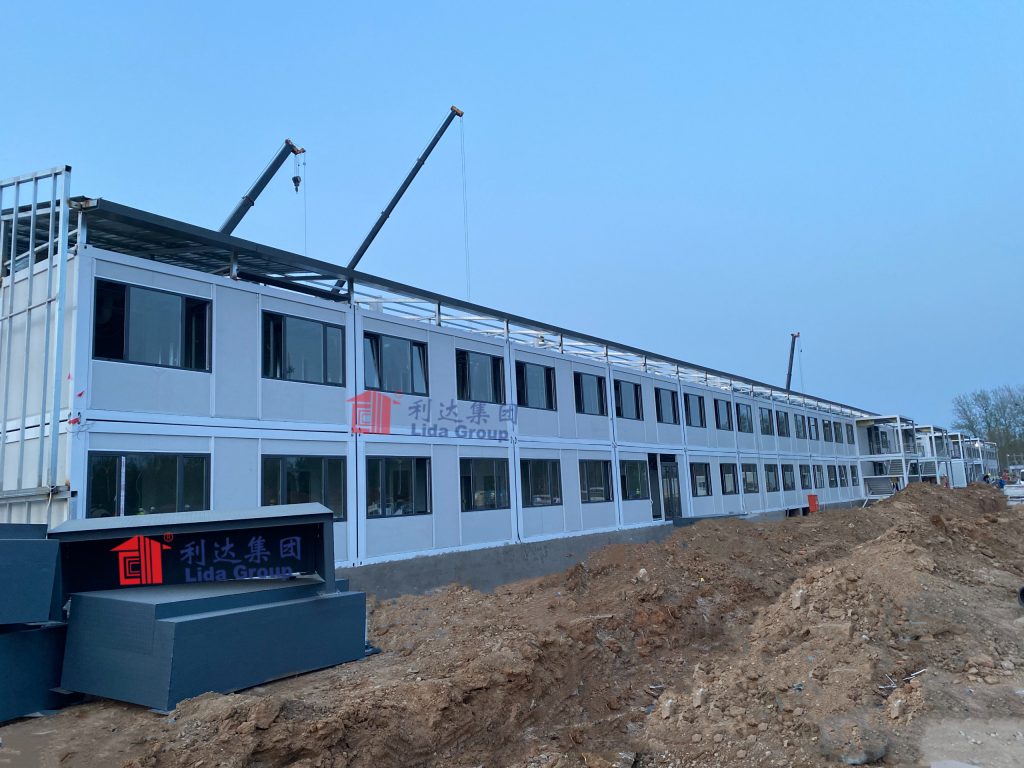
7. Conclusion
Lida Group’s Energy-Efficient Mobile Modern Container House Units have set a new standard in prefabricated container building—proving that mobility, energy efficiency, and modern comfort can coexist. By addressing the core shortcomings of traditional and early container housing—thermal inefficiency, reliance on fossil fuels, and limited customization—Lida has transformed container homes from niche solutions into mainstream, sustainable housing options.
The company’s core technologies—Advanced Thermal Insulation, Integrated Renewable Energy, Smart Energy Management, and Mobile Foundation Systems—work in harmony to deliver units that are not only energy-efficient but also adaptable to diverse needs: from digital nomads traveling across Europe to disaster-affected families in Pakistan, and from eco-resort guests in Costa Rica to construction workers in Australia. Real-world case studies demonstrate that Lida’s units deliver tangible value: lower energy costs, improved comfort, reduced environmental impact, and the flexibility to relocate as needs change.
Market feedback and industry recognition confirm that Lida’s innovations have reshaped the industry. Competitors are now raising their energy standards, new sectors are adopting container housing, and policies are evolving to prioritize sustainable, mobile solutions. Lida’s future plans—next-generation insulation, AI-powered optimization, hydrogen backups, and emerging market expansion—ensure that the company will continue to lead the way, pushing the boundaries of what’s possible in energy-efficient mobile housing.
In a world facing climate change, rising energy costs, and evolving lifestyle needs, Lida Group’s Energy-Efficient Mobile Modern Container House Units offer a vision for the future of housing: one that is sustainable, flexible, and accessible to all. By setting new standards in prefabricated container building, Lida is not just building homes—they are building a more efficient, resilient, and equitable future for communities around the globe.

Related news
-
Lida Group's Advanced Prefabricated Container Building Technology Delivers Customizable Mobile Modern Container House Solutions
2025-09-28 10:20:05
-
Emergency Housing Solutions Transformed by Lida Group's Rapid Deployment Prefabricated Container Building Systems
2025-09-26 17:38:33
-
Lida Group Pioneers Eco-Friendly Prefabricated Container Building with Smart Mobile Modern Container House Features
2025-09-26 17:27:49
contact us
- Tel: +86-532-88966982
- Whatsapp: +86-13793209022
- E-mail: sales@lidajituan.com


